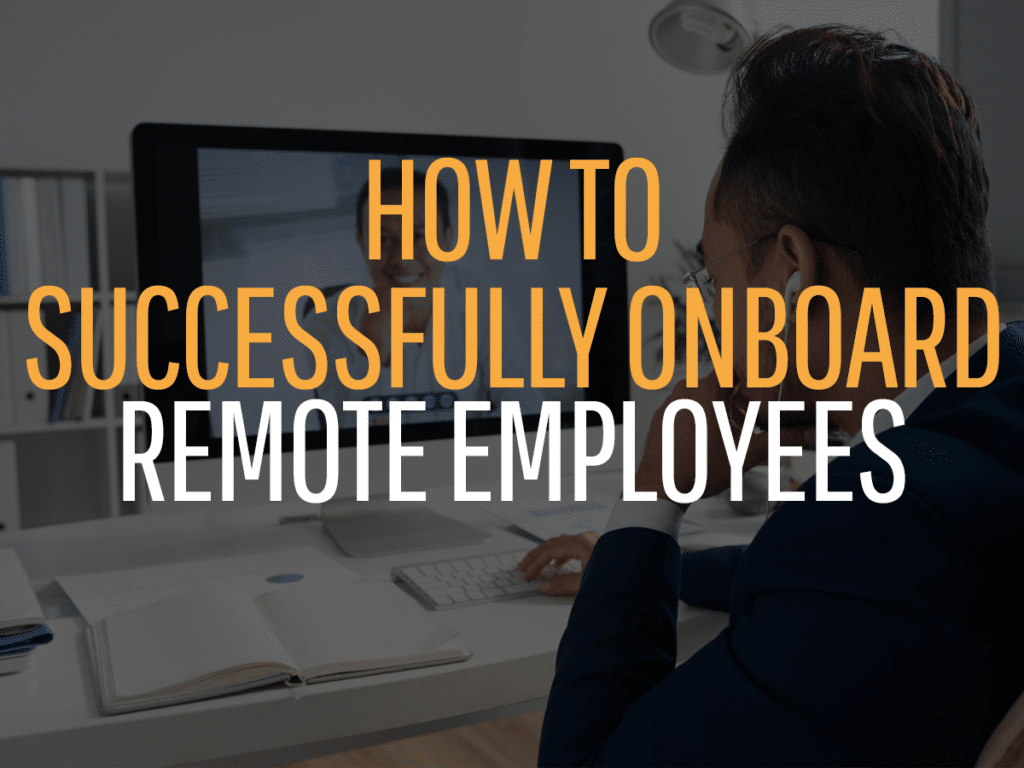Optimize your onboarding with these five surefire strategies.
The pandemic has thrown quite a few curve balls at companies around the world. No one is immune from the need to transform existing processes in response to COVID-19, and most companies have shifted to virtual onboarding due to the convenience and safety it offers. However, as many organizations have been experiencing, virtual onboarding poses particular challenges. In a nutshell, it’s harder for employees to feel connected with the team and build lasting relationships from the get-go.
Fortunately, companies can take a lesson from some early movers in the virtual realm who have mastered the art of virtual onboarding. Working with top talent from across the world, we’ve learned some key ways to fine-tune the virtual onboarding process ourselves. We’d like to share some lessons based on our own experience here.
Create a dynamic onboarding schedule.
Don’t make the mistake of just talking to your new hire on Zoom for hours on end. It’s too easy to zone out and disengage on a lengthy video call. The solution? Diversify your onboarding schedule, adding a variety of activities throughout day one and the first week. Create a clear structure with a dynamic range of activities.
Here’s a sample schedule for day one:
- Short one-on-one with the manager about the structure of the week.
- Welcome meeting with the team with a virtual icebreaker.
- Pre-recorded video message from the CEO/founder.
- Goal-setting exercise for week one and month one.
- Discussion with the manager about goals and objectives.
- Introductory training video.
- One-on-one with a peer mentor (assign a buddy too if possible).
- Virtual lunch with the team with food delivered to their homes.
Mixing up the activities focused on listening, discussing goals, and making new introductions will help the new hire stay focused and engaged. Livening up the day with activities like icebreakers will make it more enjoyable and help the team build comradery. And of course, having food delivered will make the team lunch extra special.
Make sure they understand how to use their technology.
Nothing makes a new employee feel as discouraged as not being able to fire up the new platform that everyone uses to communicate, especially with virtual onboarding. Help them set up their technology before day one so they can hit the ground running. In fact, make sure they receive their computer and any other equipment two to five days before they start. You don’t want their team introductions or manager one-on-ones to be delayed by malfunctioning software. Assign a staff member who is familiar with software and equipment setup to make sure that everything is working smoothly in advance.
Focus on building key relationships.
Help new hires focus on building the most pivotal relationships. These are the most critical people to build relationships with, according to Harvard:
- The manager and hiring manager
- Direct reports
- A mentor
- Peers
- Representatives from several key functions
As new hires cultivate these relationships, they’ll quickly feel like a core part of the team with a solid understanding of its culture and processes.
Over-communicate and over-clarify.
Most new hires with their managers made themselves more available to answer questions in their first month on the job. Err on the side of over-communicating, not under-communicating. Reiterate your expectations for the role at key points throughout the first week and beyond. Remote employees can easily feel detached and unclear about their role or cultural norms, so it’s vital to explicitly state what you expect from them and how your company does things.
Share complex information in different ways so employees can absorb it in the way that works best for them. For instance, have a peer mentor review the topic covered in a training video. Often, a new idea can “click” better when presented in a different way.
Develop a coaching plan tailored to their needs.
Showing you’re invested in new hires’ development is the best way to keep them invested in your company. Here are several key ways to coach them to success:
- Help them set both performance goals and development goals. Performance goals relate to what they’ll actually accomplish on the job. Set goals for each of the first four weeks, the first month, 60 days, and 90 days. Development goals pertain to their professional development—how they aim to learn and grow—and should be set for the same periods.
- Set a reasonable number of goals. Google recommends 3 to 5 so that employees aren’t stretched too thin and suggests identifying three key measurable results for each of them.
- Guide employees in structuring their schedule. Employees have a lot of insight regarding when they’re most productive in certain ways. Managers can help them leverage that self-knowledge along with internal scheduling knowledge and share tips for staying focused and productive while working remotely. For example, managers could encourage them to use the Pomodoro Technique, which involves working in 25-minute spurts with short breaks in between.
- Hold check-ins twice a day during the first week and once a day after that. That way, employees will always have the guidance and real-time mentoring they need to excel.
Taking these steps will help new hires quickly get up to speed in terms of their role, working relationships, and organizational culture. Ask new hires for feedback about the process so you can continue refining it, too. They’ll help you understand what you excel at and where you have room to grow!







